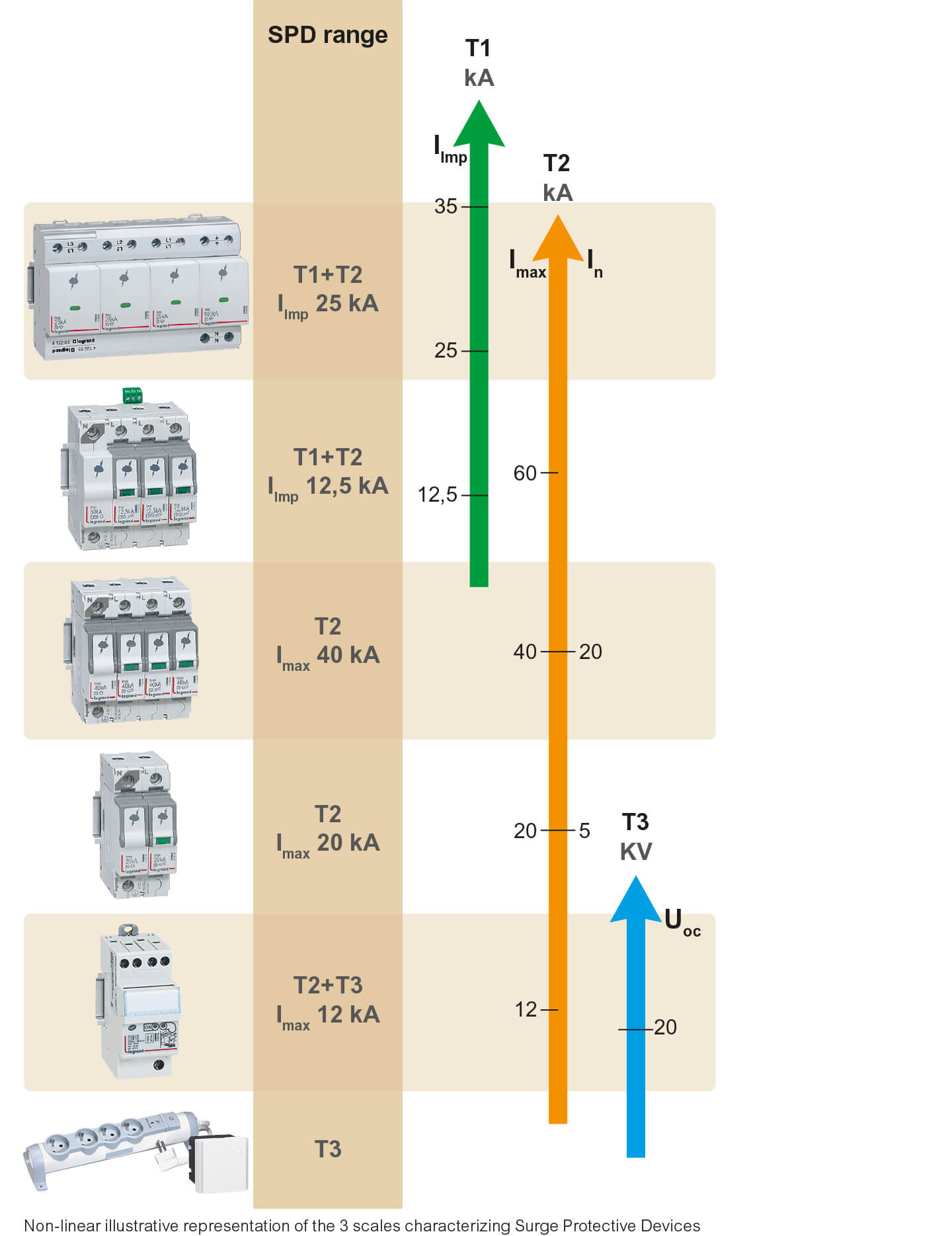What are the risks caused by lightning and the protection against them?
During thunderstorms, lightning strikes the earth, causing physical damage to installations and deteriorating electrical and electronic equipment. It is therefore essential to install reliable systems capable of protecting people and property from the various effects generated.
DIRECT EFFECTS OF LIGHTNING
When lightning strikes a building or a structure directly, it generates a very high current which passes to the ground via the chimney, the roof, the walls, etc. This current is generally between 50 and 100 kA, but can sometimes reach 200 kA, and can cause fires or even explosions.

An "external" system, commonly called a lightning rod, can protect the building by capturing the lightning current and passing it directly to the ground.
INDIRECT EFFECTS OF LIGHTNING
Even when it does not strike a building directly, lightning can generate surges in the building's electrical system through either the power line or the ground connection. These indirect effects can occur by conduction, by induction "loop effect" or by rising to the ground.

Surge protectors are the essential solution to protect people and property against these effects. They allow :
- avoid any risk of electrocution for the people present
- avoid any material damage or premature aging of the equipment and components of the installation
- to improve the continuity of the electrical installation
There are two types of lightning arresters
- the housing surge protector, also called mains surge protector: it protects the installation against overload and short circuit currents
- the surge protector for telephone line and communication network: installed in addition to the surge protector for housing, it protects the equipment connected to the telephone and digital lines inside the building
Legrand's advice
• For each dwelling, provide a protected lightning arrester for the switchboard and a telephone arrester.
• Set up proximity protection for sensitive equipment (computers, electronics).
Important!
As the surge protector is an active product whose components age naturally over time, it must be associated with a circuit breaker to protect it against short circuits at the end of its life.
WHO IS CONCERNED?
The NF C 15-100 standard requires a lightning arrester in the following cases :
- building equipped with a lightning conductor: install at least one T1+T2 type lightning conductor, Iimp 12,5 kA
- building located in a zone with a high keraunic level and whose power supply is entirely or partially overhead
- building located in a zone with a high keraunic level when the safety of people is concerned. Examples: installation which includes a medical equipment at home, an intrusion alarm, a fire alarm, a technical alarm against domestic risks, etc

Legrand solutions
With our range of surge protectors, you benefit from solutions adapted to all types of installations and all levels of risk.

Good to know!
We offer solutions with integrated short-circuit protection to ensure continuity of operation, reliability and safety. Surge protectors with integrated protection also simplify and secure the installation and maintenance.
HOW TO CHOOSE A SURGE PROTECTOR?
Several criteria must be taken into account when choosing a lightning arrester: type of building concerned, keraunic level, type of network line, equipment present, etc.
 CANADA
CANADA
 MEXICO
MEXICO
 USA
USA
 CAMBODIA
CAMBODIA
 UNITED ARAB EMIRATES
UNITED ARAB EMIRATES
 VIETNAM
VIETNAM
 THAILAND
THAILAND
 SINGAPORE
SINGAPORE
 PHILIPPINES
PHILIPPINES
 MYANMAR
MYANMAR
 MALAYSIA
MALAYSIA
 LAOS
LAOS
 INDONESIA
INDONESIA
 HONG KONG
HONG KONG
 China
China
 RUSSIA
RUSSIA
 BELGIUM
BELGIUM
 FRANCE
FRANCE
 GERMANY
GERMANY
 GREECE
GREECE
 ITALY
ITALY
 POLAND
POLAND
 SPAIN
SPAIN
 SWEDEN
SWEDEN
 TURKEY
TURKEY
 UK
UK
 AUSTRALIA
AUSTRALIA
 NEW ZEALAND
NEW ZEALAND